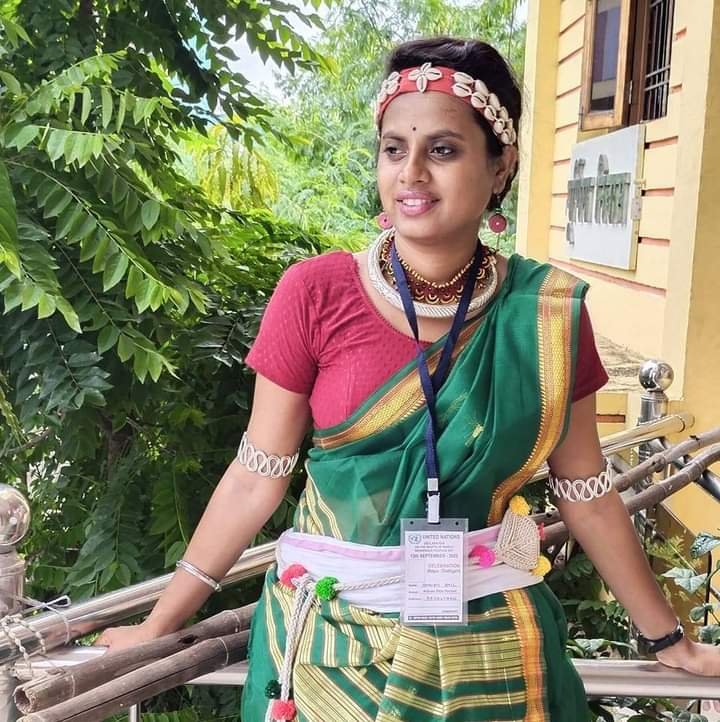Gonds are one of the largest tribal groups in the world. The Gond people, officially recognized as Scheduled Tribes, form a diverse group of aboriginal communities residing in central and south-central India. Their population is approximately two million, and they inhabit the states of Madhya Pradesh, Maharashtra, Telangana, Andhra Pradesh, Chhattisgarh, Bihar, and Odisha. Speaking various dialects of Gondi, an unwritten language belonging to the Dravidian family, the Gond people display linguistic diversity, with some adopting Hindi, Marathi, or Telugu, depending on the dominant language in their region.
Culturally, the Gond exhibit considerable variation. Although their religious practices are centered around the worship of clan and village deities, along with ancestor veneration, there is no uniformity in their cultural traditions. Among the Gond, the Raj Gond stand out, having once adhered to an elaborate feudal order. This group was characterized by local rajas who held authority over clusters of villages. The Raj Gond continue to operate outside the Hindu caste system, not recognizing Brahmanical superiority and remaining unbound by certain Hindu norms, such as the prohibition on cow slaughter.
In the highlands of the Bastar region in southern Chhattisgarh, three significant Gond tribes—the Muria, the Bisonhorn Maria, and the Hill Maria—reside. The Hill Maria, residing in the rugged Abujhmar Hills, practice traditional slash-and-burn (jhum) cultivation on hill slopes, using hoes and digging sticks more than plows. Their villages are periodically relocated, and the clan’s collectively owned land rotates through several village sites over the years. The Bisonhorn Maria, named for their distinctive dance headdresses, inhabit less hilly terrain and maintain more permanent fields cultivated with plows and bullocks. The Muria are recognized for their ghotul, or youth dormitories, where unmarried individuals of both genders lead highly organized social lives, receiving training in civic duties and sexual practices.
Table of Contents
The Gonds Tribe: Tracing the Roots of a Rich Cultural Heritage
The origin of the Gonds tribe is deeply rooted in the central and south-central regions of India. The Gonds, officially designated as Scheduled Tribes, have a historical presence in areas that span across Madhya Pradesh, Maharashtra, Chhattisgarh, Uttar Pradesh, Telangana, Andhra Pradesh, Bihar, and Odisha.
The exact origins of the Gonds are not precisely documented, given the largely oral nature of their history. However, they are considered one of the largest tribal communities in India, with a diverse and rich cultural heritage. The Gonds have inhabited the central Indian landscape for centuries, contributing significantly to the cultural, social, and historical tapestry of the region.
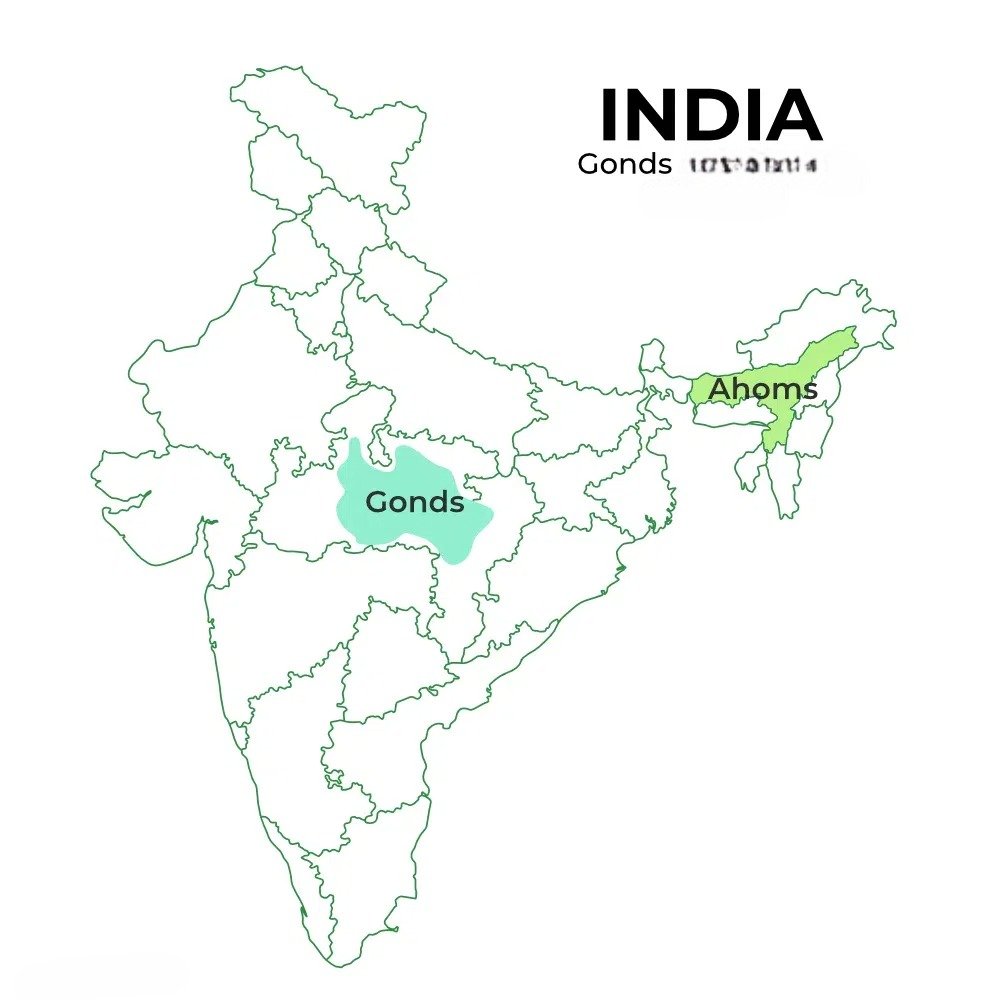
Their historical narrative is intertwined with the establishment of Gond kingdoms, cultural practices, and interactions with neighboring communities and empires. Over the centuries, the Gonds have maintained a distinctive identity, fostering a unique way of life that reflects their connection to the land, nature, and a rich tradition of art and folklore.
The Resilient Tapestry: A Journey through the History of the Gond People
The history of the Gonds is deeply rooted in the central and south-central regions of India. The Gond people, officially designated as Scheduled Tribes, have a rich and diverse history that spans centuries. Here are some key points in the history of the Gonds:
- Ancient Kingdoms: The Gonds have a history of forming significant kingdoms, with Chanda being one of the earliest, founded in the year 1200. This kingdom played a crucial role in introducing administrative structures, including the first defined revenue system among the Gond kingdoms.
- Kingdom of Garha: In the 14th century, the Gond rulers known as the Kalachuri were overthrown by Jaduri, leading to the establishment of the Kingdom of Garha. This kingdom witnessed historical events, including the reign of the renowned warrior-queen Rani Durgavati, known for her resistance against Akbar.
- Mughal Influence: The Gond territories experienced periods of Mughal conquest, followed by restoration and subjugation under Mughal hegemony. This marked a phase of complex interactions between the Gond kingdoms and the Mughal Empire.
- Maratha Occupation: During the Third Anglo-Maratha War, Marathas temporarily occupied Gond territories. This geopolitical shift had implications for the Gond rulers and their domains.
- British Colonial Era: Post the Anglo-Maratha War, British control extended to revenue collection through the management of Gond Zamindaris. The colonial forest management practices marginalized the Gonds, impacting their traditional dependence on forests for livelihood.
- Bastar Rebellion: The discriminatory forest policies of the British led to the famous Bastar Rebellion in 1910. This armed struggle was a response to the infringement of Gond rights and became a significant historical event in their resistance against British rule.
- Cultural Heritage: Throughout their history, the Gonds have preserved their unique cultural identity, including distinctive art forms like Gond paintings. These paintings, featuring intricate patterns and vibrant colors, have gained international recognition.
The history of the Gonds is a tale of resilience, cultural richness, and a continuous quest for identity in the face of changing political landscapes and external influences.
Warriors of Resilience: The Role of Gonds in Historical Conflicts

Historically, the Gonds, like many tribal communities, have played roles in conflicts and wars that reflect their resilience and determination. While specifics may vary, here are some aspects of the role of Gonds in war.
- Resistance Against Invaders: Gond territories have often been subject to invasions by external forces. The Gonds, known for their valor, have resisted invasions and fought to protect their lands, asserting their independence.
- Defenders of Kingdoms: During the period of Gond kingdoms, warriors from the Gond community served as defenders. They played crucial roles in safeguarding their territories from external threats, contributing to the military strength of Gond rulers.
- Bastar Rebellion: One notable historical event is the Bastar Rebellion in 1910, where the Gonds engaged in armed resistance against British rule. This rebellion was a response to the infringement of Gond rights, particularly related to forests and livelihood.
- Role of Gond Warriors: The Gonds, known for their martial traditions, had warriors who actively participated in battles. These warriors demonstrated bravery and tactical skills in times of conflict.
- Struggles Against Oppression: Beyond conventional wars, the Gonds have been involved in struggles against various forms of oppression. This includes resistance against discriminatory policies, land encroachments, and socio-economic injustices.
- Adaptation to Changing Circumstances: With changing geopolitical landscapes, the Gonds adapted to different ruling powers and engaged in alliances when strategic. Their history reflects a dynamic response to the challenges posed by external forces.
The role of Gonds in war is a multifaceted aspect of their history, highlighting their determination to protect their communities, resist external pressures, and assert their rights in the face of adversity.
Diversity Within Unity: Exploring the Various Types of Gonds
The Gond community comprises various subgroups, each with its own distinct identity and characteristics. Here are some notable types of Gonds:
- Raj Gonds: Historically significant, the Raj Gonds were associated with an elaborate feudal order. They were characterized by local rajas who held authority over groups of villages.
- Madia Gonds: Another subgroup among the Gonds, the Madia Gonds contribute to the cultural diversity of the community. Each subgroup often has unique customs and traditions.
- Dhurve Gonds: This subgroup of Gonds has its own specific cultural practices and historical background, contributing to the overall diversity within the Gond community.
- Khatulwar Gonds: Recognized as a distinct subgroup, the Khatulwar Gonds have their own cultural nuances and possibly regional variations in customs and traditions.
These subgroups add to the rich tapestry of the Gond community, each playing a role in shaping the broader cultural and historical landscape of the Gonds in central and south-central India.
Gond Painting: A Glimpse into Tribal Art
Gond Painting is a captivating traditional folk art form originating from the Gond tribes of Madhya Pradesh, India. Renowned for its vibrant and intricate designs, these paintings serve as a visual narrative of the natural world, animals, and tribal life.
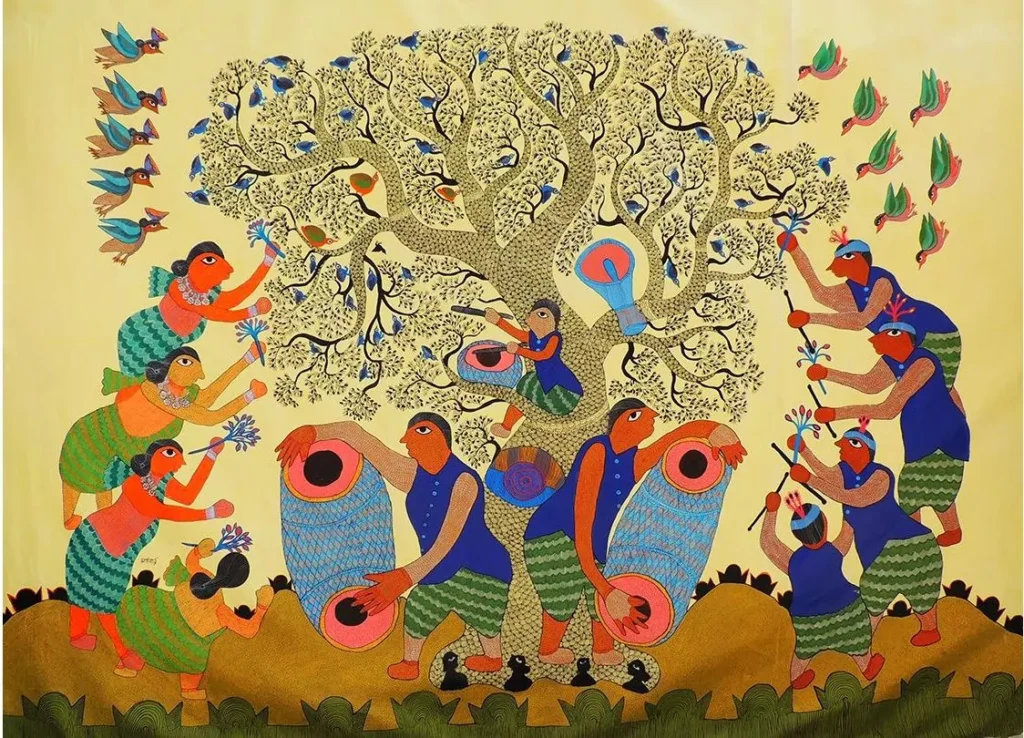
These artworks are distinguished by their meticulous patterns and vivid colors, reflecting the rich cultural tapestry of the Gond community. What sets Gond paintings apart is their traditional use of natural colors derived from leaves, flowers, and mud, adding an authentic touch to the creations.
The unique style and technique of Gond paintings are characterized by intricate dot and line work. Talented artists employ fine-tipped pens or brushes to bring out the detailed elements, contributing to the overall visual appeal of the artwork.
Themes explored in Gond paintings often delve into nature, folk stories, and mythology, offering a glimpse into the cultural ethos of the Gond tribes. This traditional art form has garnered global appreciation and recognition, finding a place in various international exhibitions. Gond painting stands as a testament to the rich artistic heritage of the Gond community and continues to captivate audiences worldwide.
Spiritual Diversity: Deities and Beliefs in the Gonds Tribe
The Gonds, like many indigenous communities, have a diverse and decentralized belief system. They worship a multitude of deities associated with nature, spirits, and ancestral forces. While there isn’t a singular “god” in the Gond tradition, some common elements of their pantheon include:
- Baradeo: Often considered the supreme deity, Baradeo is associated with rain, harvest, and fertility. Worship of Baradeo is crucial for agricultural prosperity.
- Bada Dev: Another significant deity, Bada Dev, is believed to protect the village and its inhabitants. Rituals and ceremonies are dedicated to seeking the blessings of Bada Dev for communal well-being.
- Bhimsen: Revered as a god of strength and courage, Bhimsen is often invoked for protection and valor in times of adversity.
- Penchera Devi: A goddess associated with forests, Penchera Devi is venerated for the well-being of the flora and fauna. Forests hold great importance in the lives of the Gond people.
It’s important to note that the Gond belief system is highly localized, and specific deities can vary between different villages and regions. The worship of spirits, ancestors, and natural forces is integral to the spiritual practices of the Gond tribe.
Cultural Tapestry: Customs and Traditions of the Gonds Tribe
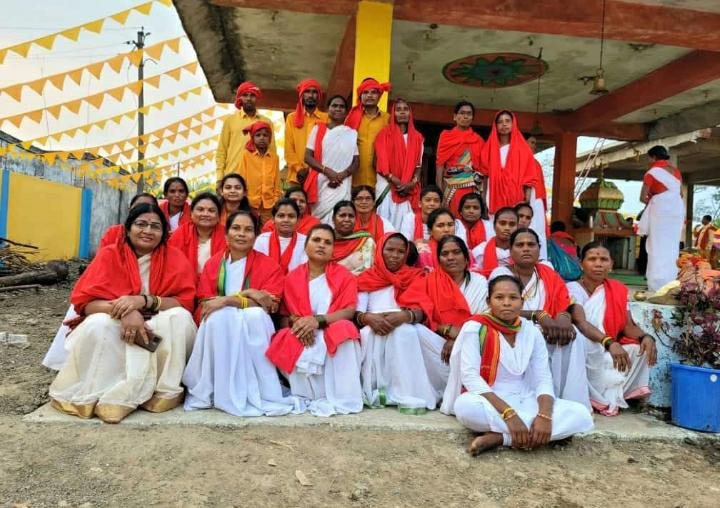
The Gonds, as a tribal community with a rich cultural heritage, have various customs that shape their way of life. Here are some notable customs in the Gonds tribe:
- Ghotul System: The Gonds practice the Ghotul system, a unique youth dormitory where unmarried boys and girls lead a highly organized social life. This system includes training in civic duties and sexual practices.
- Festivals and Celebrations: The Gonds celebrate festivals with great enthusiasm, incorporating vibrant dances, music, and rituals. Diwali, Holi, and Nag Panchami are among the festivals observed with cultural significance.
- Marriage Customs: Gond weddings are typically elaborate affairs with various rituals and ceremonies. These customs often involve traditional songs, dances, and community participation.
- Agricultural Practices: As an agrarian community, the Gonds have customs associated with farming and cultivation. Rituals related to sowing, harvesting, and other agricultural activities are integral to their customs.
- Art and Craft: Gonds are known for their distinctive art forms, such as Gond paintings. These intricate artworks depict natural elements, animals, and tribal life, showcasing the artistic customs passed down through generations.
- Spiritual Practices: The Gonds follow animistic and nature-centric spiritual practices. Worship of deities associated with nature, ancestral spirits, and rituals tied to agricultural cycles are significant aspects of their customs.
- Social Structure: The Gond community often follows a decentralized social structure with local leaders and councils playing vital roles. Customs related to community decisions and dispute resolution contribute to their social fabric.
- Forest Dependency: With a historical connection to forests, Gonds have customs linked to their dependency on forest resources for livelihood. Changes in forest management practices have influenced their customs over time.
These customs collectively form the cultural mosaic of the Gonds, reflecting their connection to nature, community, and traditional values.
Harmony with Nature: Exploring the Diverse Livelihoods of the Gonds Tribe
The work and livelihood practices of the Gonds, an indigenous tribe in central India, are diverse and often closely tied to their natural surroundings. Here are some aspects of the work traditionally undertaken by the Gonds:
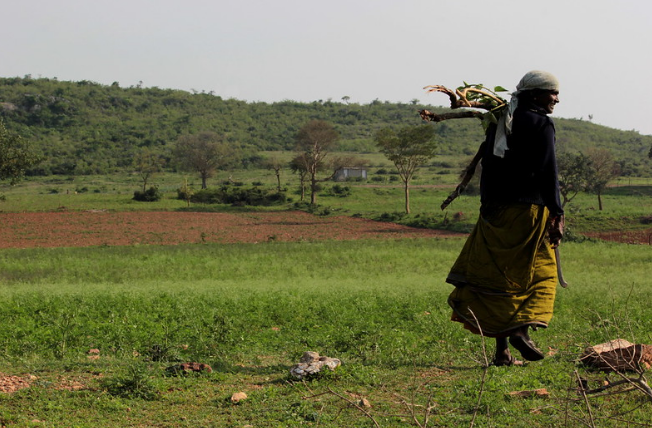
- Agriculture: Agriculture is a primary occupation for many Gonds. They engage in cultivation, growing crops such as millet, rice, and pulses. The agricultural calendar and associated rituals are integral to their way of life.
- Forest-Based Livelihood: Historically, the Gonds have had a close relationship with forests. They depend on forest resources for various aspects of their livelihood, including gathering non-timber forest products, hunting, and practicing agroforestry.
- Art and Craft: Gonds are known for their distinctive art forms, particularly Gond paintings. This traditional art involves intricate patterns and vibrant colors, depicting nature, animals, and tribal life. Artistic endeavors contribute to both cultural expression and potential income.
- Animal Husbandry: Many Gond communities are involved in animal husbandry, raising livestock such as cattle, goats, and poultry. Livestock contribute to their economic well-being and are often part of traditional agricultural practices.
- Handicrafts: In addition to painting, Gonds engage in various handicrafts. This includes making traditional tools, utensils, and items for daily use, showcasing their skills in crafting functional items.
- Ghotul System: The Ghotul system, a unique social institution, involves communal living for unmarried boys and girls. While not a form of employment, it is a social structure that plays a role in their upbringing and community dynamics.
- Trading and Bartering: In some Gond communities, trading and bartering have been traditional economic activities. Exchange systems within and between villages have historically been crucial for acquiring essential goods.
- Modern Occupations: With changing times, some Gonds have adopted modern occupations. This may include working in various sectors such as education, government, and private enterprises, reflecting adaptation to contemporary economic opportunities.
The work of the Gonds is shaped by their deep connection to nature, community values, and a rich cultural heritage. However, it’s important to note that economic activities may vary among Gond communities based on geographical location, historical factors, and changing socio-economic conditions.
Gond Trailblazers: Notable Figures and Contributions
The Gond tribe, a diverse and sizable indigenous community in central India, has produced notable individuals who have made contributions in various fields. While the recognition of individuals can vary, here are a few figures who have gained prominence:
- Soni Sori: Soni Sori is an activist and educator known for her advocacy on behalf of tribal rights, particularly focusing on issues related to Adivasi communities, including the Gonds. She has been vocal about concerns such as displacement and violence against tribal communities.
- Rani Durgavati: Rani Durgavati, a historical figure from the Gond dynasty, was the queen of the Gondwana kingdom. Known for her valor and resistance against the Mughal forces, she is remembered as a symbol of courage and leadership.
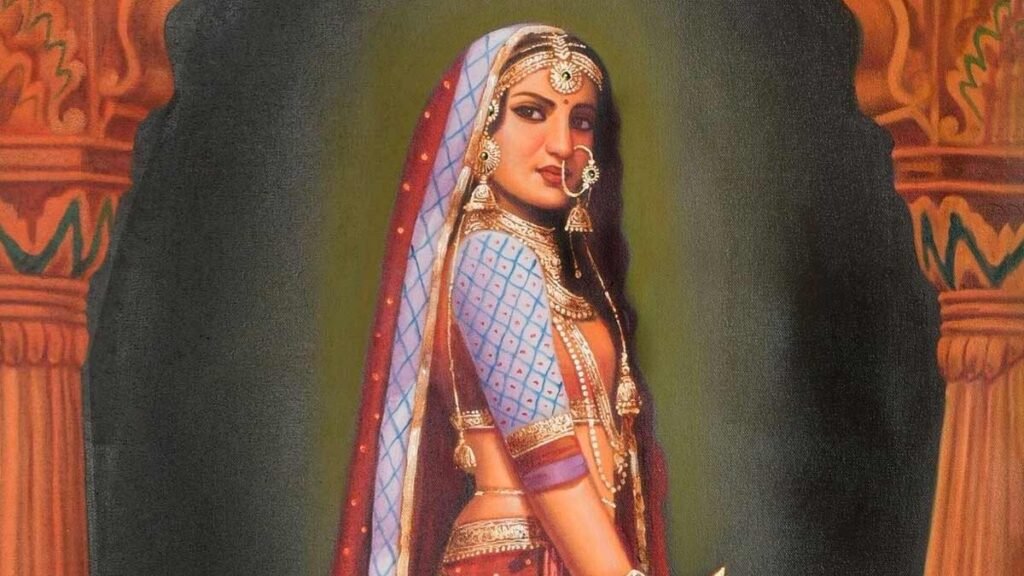
- Venkatesh Kulkarni: Venkatesh Kulkarni, an astronomer, is known for his contributions to astrophysics. He has been associated with the California Institute of Technology (Caltech) and has played a role in advancing our understanding of the cosmos.
- Shanti Tigga: Shanti Tigga, a Gond woman, made history by becoming the first woman jawan (soldier) in the Indian Army. Her achievement broke gender barriers and inspired others.
- These notable figures from the Gond tribe have left indelible marks in various fields, showcasing the diversity and talent within the community:
- Komaram Bheem: A prominent freedom fighter, Komaram Bheem played a pivotal role in the fight against British colonial rule, symbolizing the spirit of resistance.
- Gunda Dhur: Recognized as a tribal leader, Gunda Dhur’s influence extended to leadership within the tribal community, contributing to social and cultural developments.
- Ramji Gond: As a tribal chief, Ramji Gond held a position of significance, possibly playing a crucial role in governance and community affairs.
- Asha Gond: Breaking stereotypes, Asha Gond made a mark as a skateboarder, showcasing talent and athleticism beyond conventional expectations.
- Hridayshah: As the king of Garha, Hridayshah held a position of authority, contributing to the historical and cultural legacy of the Garha Kingdom.
- Ajanbahu Jatbasha: The founder of the Gonds of Deogarh dynasty, Ajanbahu Jatbasha played a crucial role in shaping the dynastic history and identity of the Gond community.
- Motiravan Kangali: A linguist and author, Motiravan Kangali contributed to the preservation and study of language, leaving a legacy in the realm of literature.
- Kanaka Raju: Renowned as a Gusadi dancer, Kanaka Raju enriched the cultural tapestry of the Gond tribe through traditional dance forms.
- Bakht Buland Shah: As a Rajgond ruler, Bakht Buland Shah’s leadership would have influenced the socio-political landscape of the region.
- Dalpat Shah: The 49th ruler of the Garha Kingdom, Dalpat Shah played a role in the historical continuity and governance of the Garha dynasty.
- These figures, ranging from freedom fighters and leaders to artists and athletes, collectively contribute to the rich heritage and legacy of the Gond tribe, showcasing their resilience, talent, and diverse contributions across various domains.
These individuals represent a small sample of those from the Gond tribe who have made significant contributions. The Gond community has a rich cultural heritage, and many individuals contribute to various fields, including art, activism, education, and science.

